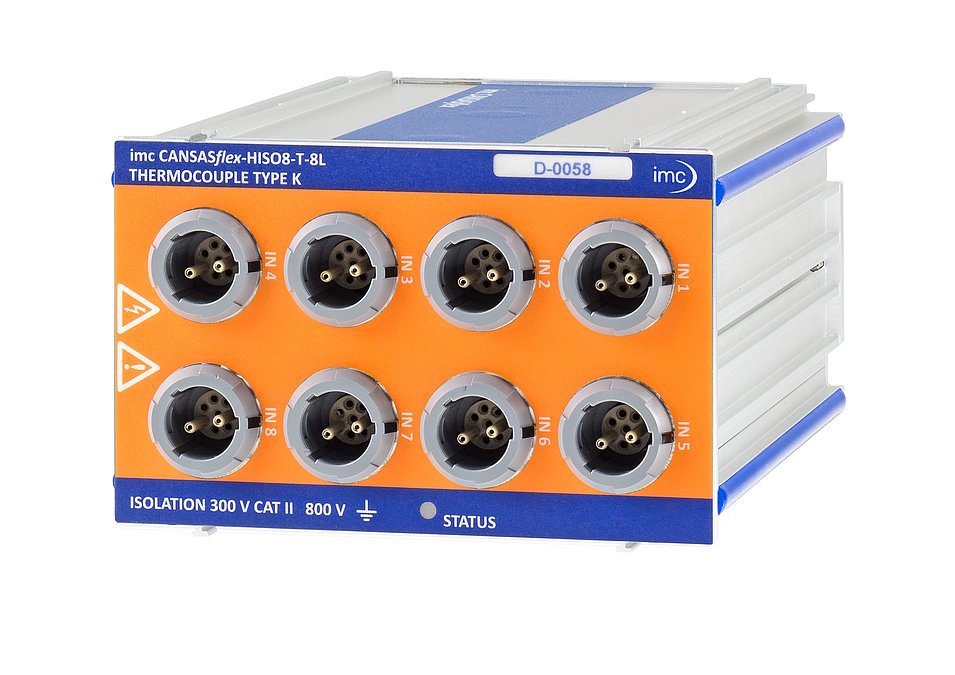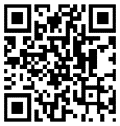Batteries on the test stand

Example of a battery test stand
The development of new batteries and battery management systems requires extensive testing and validation - especially with regard to the specified application. This includes investigations of charging and discharging cycles at different temperatures. These tests are carried out in specially protected climatic chambers and require extensive instrumentation.
Requirements for measurement systems:
For a detailed analysis of the battery and its cells, temperatures and cell voltages have to be measured in many places. Over 100 measurement points are not a rarity here. Due to the high common-mode level of the battery of up to 800 V, a highly isolated measurement technique is required which allows for safe testing.
Measurement technology used:
On the battery test stand, 20 imc CANSAS-HISO8 CAN measurement modules were used. Each module offers 8 highly-isolated inputs for measuring cell voltages or temperatures (thermocouples and PT100) at up to 800 V voltage levels. In sum, up to 80 cell voltages and 80 temperatures can be measured simultaneously.
Highly isolated and safe:
The high-isolation strength of 800 V CAT I and 300 V CAT II ensures safe measurements (EN 61010).
Automation system integration:
The imc measurement modules support the CANopen protocol for particularly worry-free integration into the automation environment.
Redundant monitoring:
As an additional security, an imc BUSDAQ-X data logger was used which also monitored and stored all measurement data from the imc CANSAS modules. The data logger took over the following functions:
- Sensor-break detection for thermocouples
- Monitoring of measurement values according to min and max values (comparative operations)
- Monitoring of implausible measurement value change by monitoring rise/fall (differentiation: result for rise/fall speed too high)
- Monitoring if measurement values no longer change (differentiation: long-term average value and short-term mean value equal to zero)
- Power failure
- Termination of the test
- Backup in ring buffer
- Deactivation of test stand components possible
电池性能试验台

电池测试台实例
新型电池和电池管理系统的开发需要广泛的测试和验证,特别是在特定应用方面。这包括研究不同温度下的充电和放电循环。这些试验在特殊保护的气候室中进行,需要大量的仪器。
测量系统的要求:
为了对电池及其电池进行详细分析,必须在许多地方测量温度和电池电压。100多个测量点在这里并不罕见。由于电池的高共模电平高达800 V,因此需要一种高度隔离的测量技术,以便进行安全测试。
使用的测量技术:
在电池测试台上,使用了20个imc CANSAS-HISO8 CAN测量模块。每个模块提供8个高度隔离的输入,用于在高达800 V的电压水平下测量电池电压或温度(热电偶和PT100)。总之,最多可以同时测量80个电池电压和80个温度。
高度隔离和安全:
800 V CAT I和300 V CAT II的高隔离强度确保了安全测量(EN 61010)。
自动化系统集成:
imc测量模块支持CANopen协议,特别是无忧集成到自动化环境中。
冗余监控:
作为额外的安全措施,使用了imc BUSDAQ-X数据记录器,该记录器还监控和存储来自imc CANSAS模块的所有测量数据。数据记录器接管了以下功能:
- 热电偶传感器的损坏检测
- 根据最小值和最大值监测测量值(比较操作)
- 通过监测上升/下降来监测不真实的测量值变化(差异:上升/下降速度过高的结果)
- 监测测量值是否不再变化(差异:长期平均值和短期平均值等于零)
- 断电
- 终止测试
- 环形缓冲区中的备份
- 可能停用试验台组件








